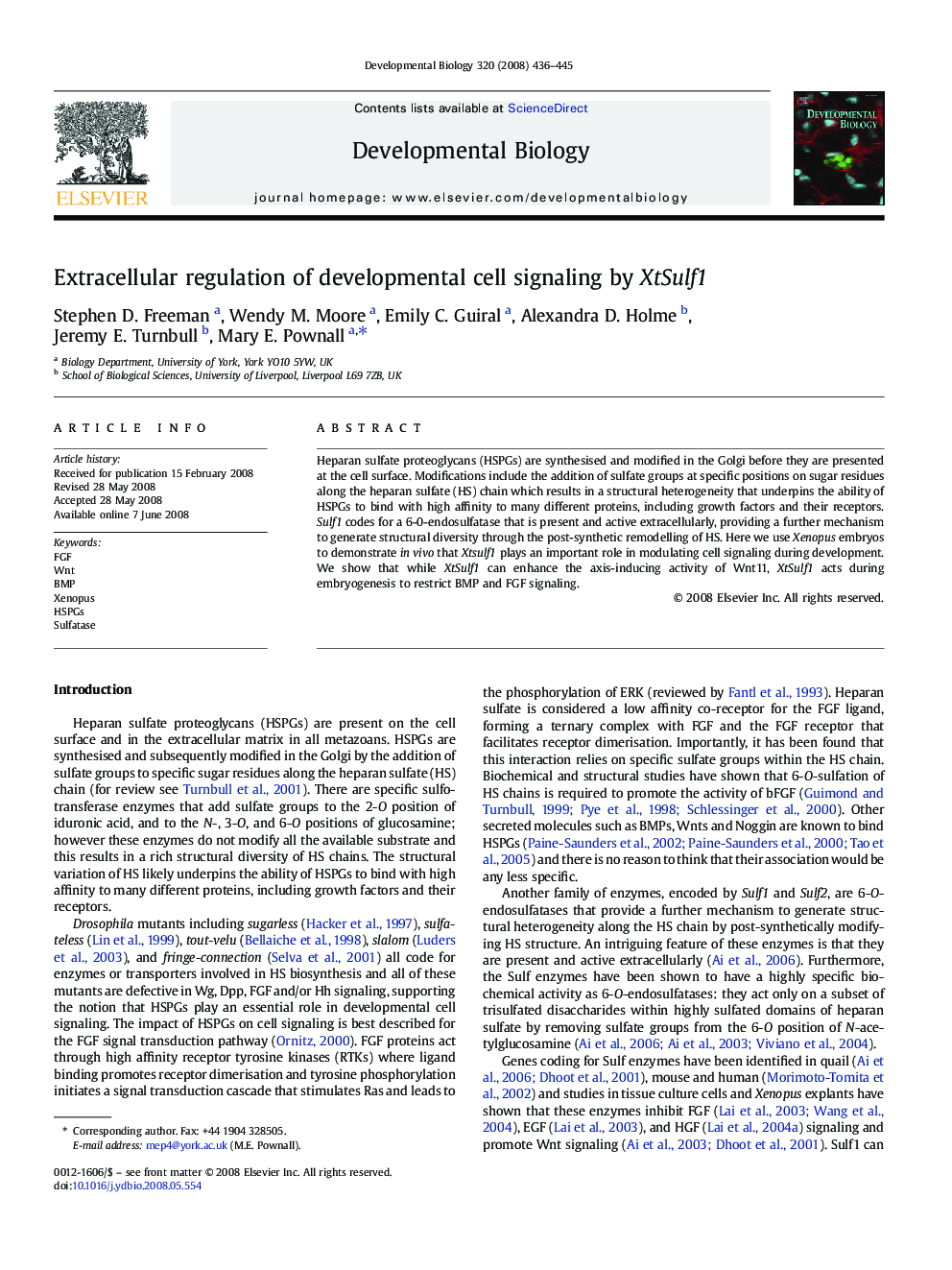| Article ID | Journal | Published Year | Pages | File Type |
|---|---|---|---|---|
| 2174503 | Developmental Biology | 2008 | 10 Pages |
Heparan sulfate proteoglycans (HSPGs) are synthesised and modified in the Golgi before they are presented at the cell surface. Modifications include the addition of sulfate groups at specific positions on sugar residues along the heparan sulfate (HS) chain which results in a structural heterogeneity that underpins the ability of HSPGs to bind with high affinity to many different proteins, including growth factors and their receptors. Sulf1 codes for a 6-0-endosulfatase that is present and active extracellularly, providing a further mechanism to generate structural diversity through the post-synthetic remodelling of HS. Here we use Xenopus embryos to demonstrate in vivo that Xtsulf1 plays an important role in modulating cell signaling during development. We show that while XtSulf1 can enhance the axis-inducing activity of Wnt11, XtSulf1 acts during embryogenesis to restrict BMP and FGF signaling.
